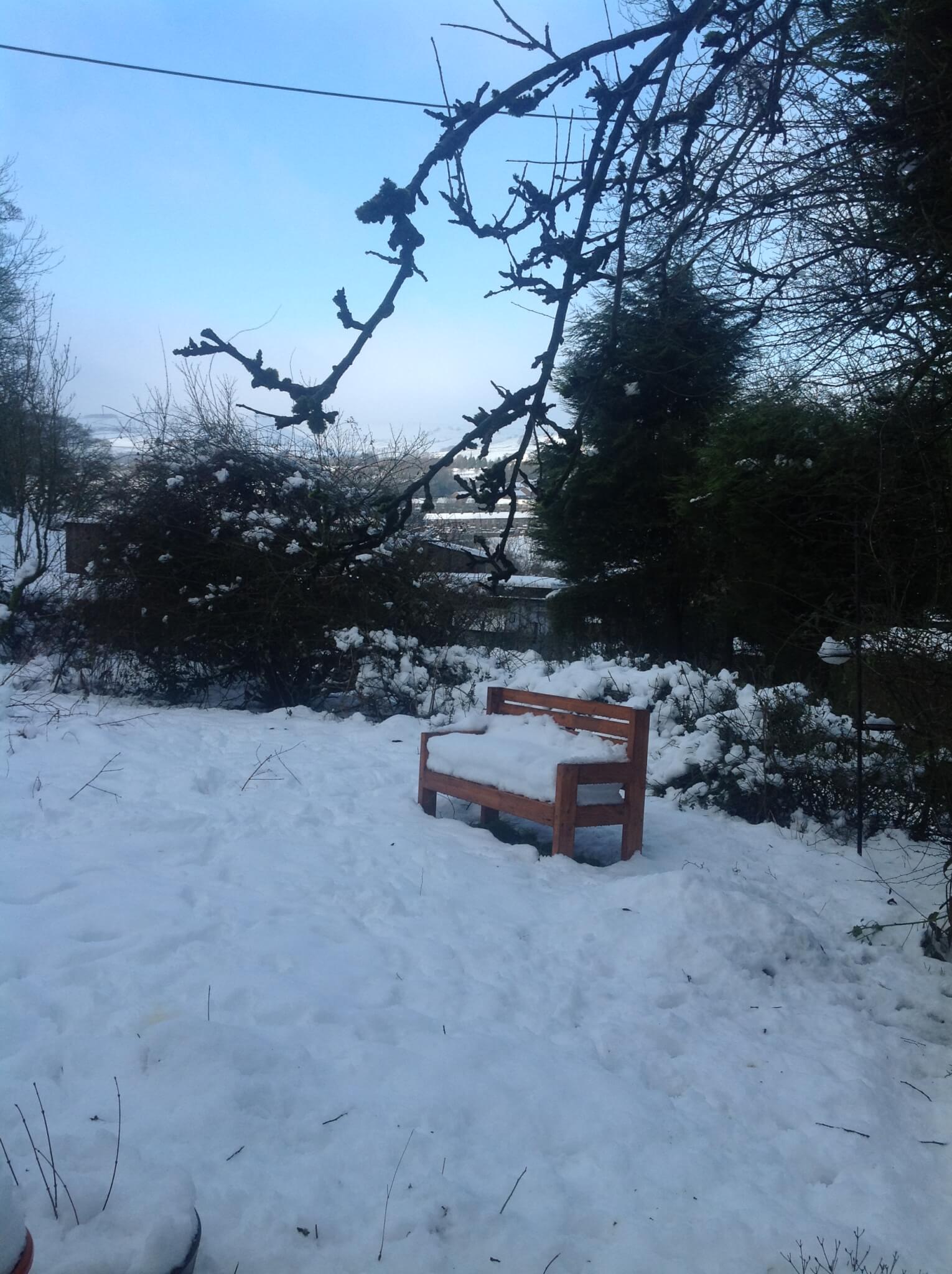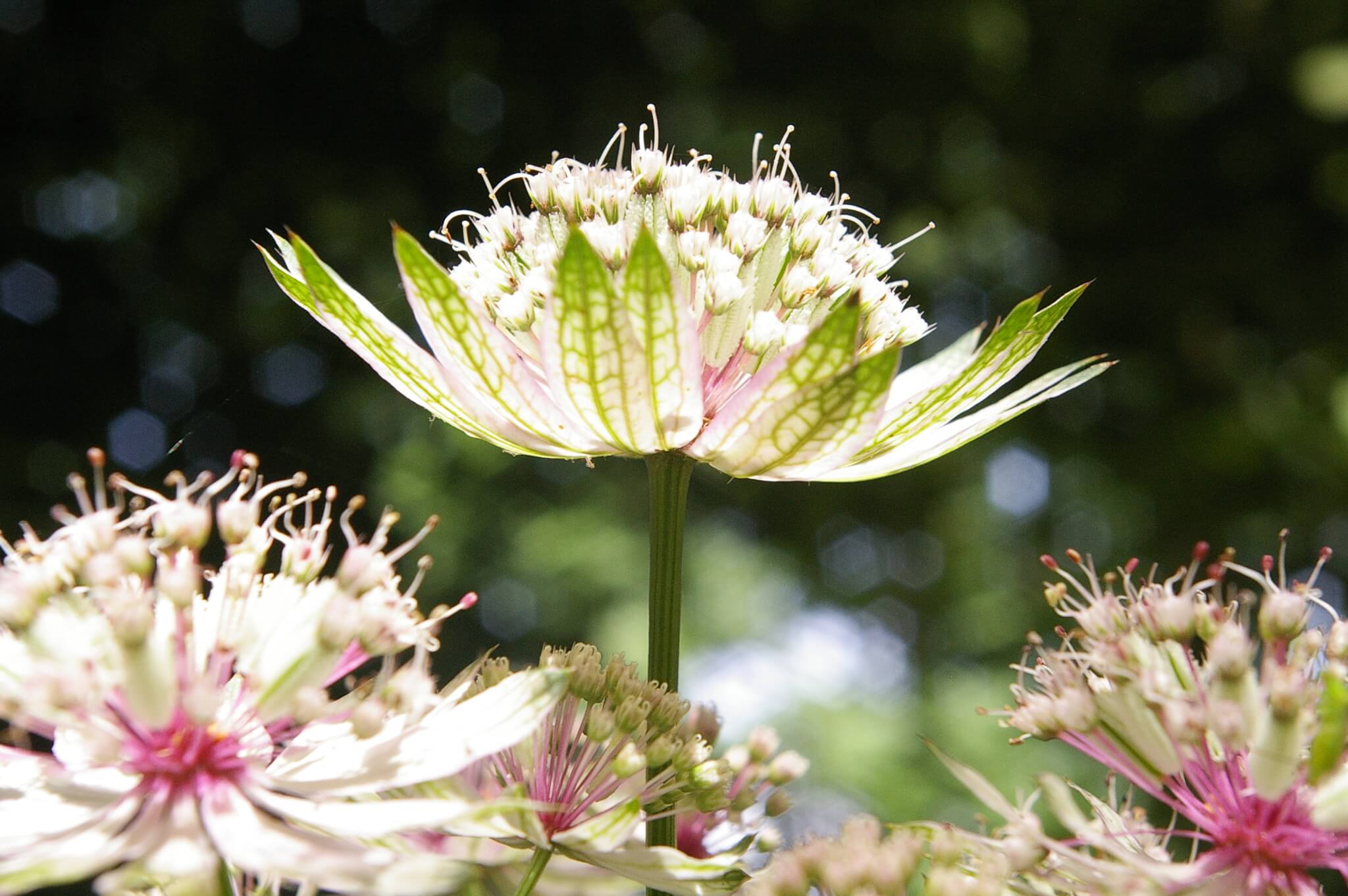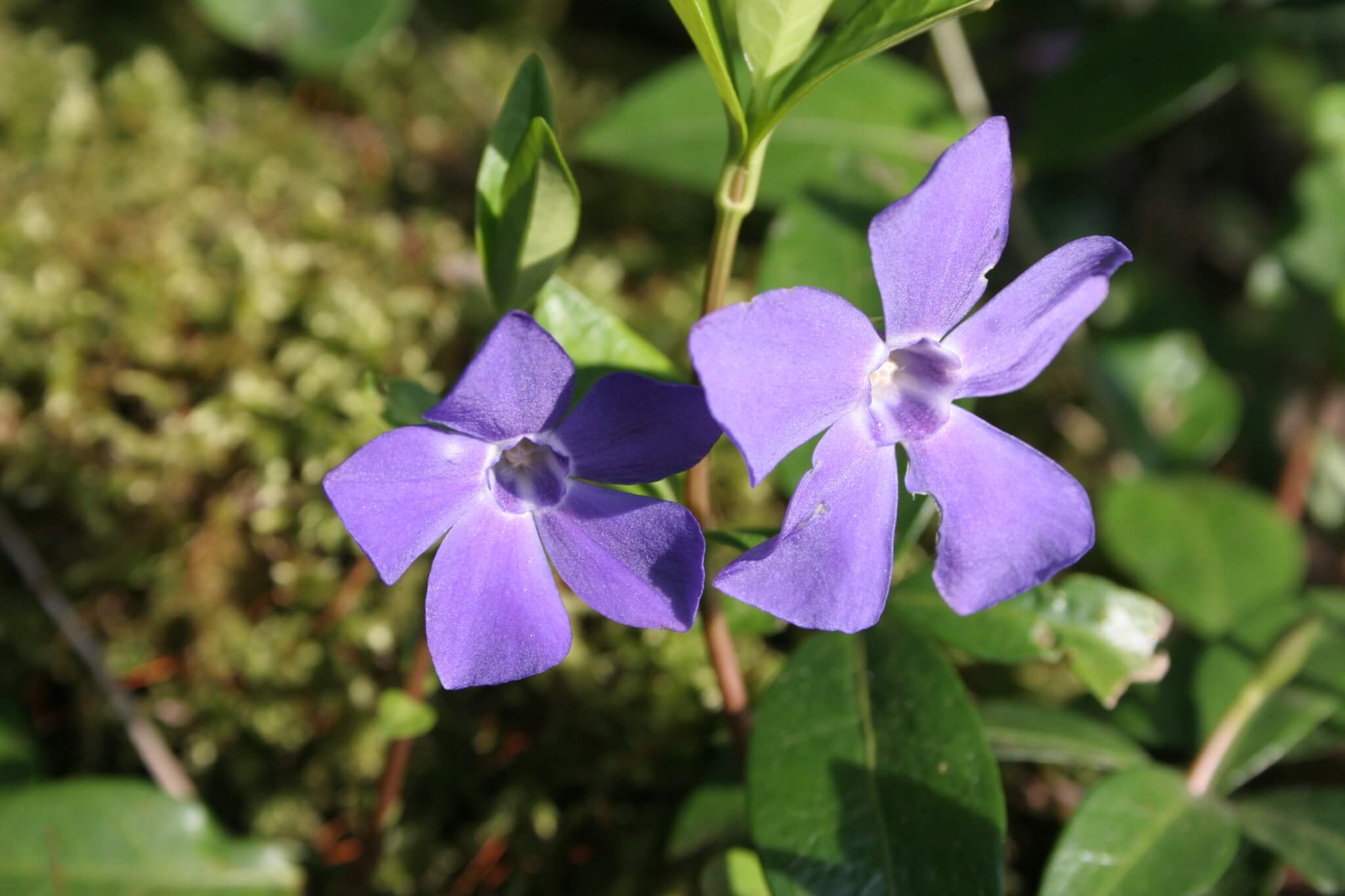
Given the snow and rain we are all suffering from, one of the best things you can do in the garden in February is stay off the soil until it has dried off somewhat. I am always amazed at the amount of tidying up needed when the snow goes, it’s as though the garden has all kinds of secrets slowly revealed by the receding white. Once it all looked pristine and smart, and then nature sets in with her chaos and leaves the garden a scruffy mess.
So continuing with the odds and ends in the garden, like cleaning tools, and is a good move. My absolute favourite is smashing old ceramic pots to make drainage crocks, and this year I seem to have a multitude of weatherworn pots to bash with my hammer – but since I had to go to hospital to have a piece of pot removed from my eye, I always wrap them in an old sack before bashing commences.
Bulbs
Spring bulbs are pushing their way through the snow, and lovely they will look too! It is worth making something of them – don’t let them get bashed around by the wind and rain of February.
This is easily done by piling up the soil a little – not earthing them up like potatoes, just a little rise in the soil, so that from a few feet away you wouldn’t really notice. It also deflects the worst of the weather away from the plant and they will look fresher for longer.
Trees
Now is the best time to plan and plant new trees, and to work on old trees.

We have an ancient apple that has, over the years before we came to the house, been dreadfully pruned. Some people think it is good enough to prune a tree according to the persons requirements but trees actually need to be pruned for their own purposes. Our tree hasn’t borne fruit since we arrived, is a twisted mess, where it has been hacked off here and there to avoid passing vehicles and stop it interfering with power and telephone cables.
So what do you do with an ancient apple, or other tree, that has seen better days?
Check for infection
If your plant has any signs of infection, drastic measures are required. From the site of infection, where the fungal spores will be, follow back feeling the wood. Are they spongy, very wet, a different colour from the rest of the tree? From this you can find out how far back the infection goes. If it is over several branches you might need to think about removal.
Before doing so, take some hardwood cuttings. Find some new growth, cut it odd with a slanting cut
Clear the decks
Have you ever see the grass under a tree? It get’s thinner and thinner, partly due to the shade, and partly because of the nutrients and water pulled out of the soil by the tree.
Trees are very hungry and thirsty plants, and an old tree needs nothing beneath it if it is going to survive well. Our old apple had Astilbe beneath it, and they really did look lovely, but I will be moving them this winter and planting them elsewhere. Then a mulch of good quality well rotted manure and compost mixed 50:50 will feed the tree into the new season.
Feeding for colour
I don’t know about you, but around this time of the year I start to pine for things growing, certain plants grab my heart and I can’t seem to get them out of my head. One such plant is astilbe, which I I simply adore, but can be rather disappointing. The problem is nutrients.
Plants that make strong colours, or aromas, or flavours, need plenty of nutrients to make them, and this has to be added to the ground. My astilbes are my favourite plants in the garden and as such get a good feed now, of rich compost and manure (well rotted) mixed 50:50.
The same goes for my astrantia, delicate plants which, if you squint your eyes and look at the flowers, you will think they are spaceships, hovering before landing.

But then rhubarb gets the same treatment as the ornamental plants too, at this time of the year. A good few spades of well rotted manure around each crown. I used to do the old trick of taking up the crown and leaving it on the soil, as we used to do years ago, then replanting it in the early spring, having divided it.
However, when we moved to this new garden, and you might not believe this, I watched a squirrel make off with a crown, dragging it across the lawn. It decided the whole thing was too heavy, and then proceeded to nibble at the bud in the centre. So since then I haven’t bothered.
Sweet Peas
There is a lot of talk about sweet peas at the moment, and lots of confusion too, so in response to a number of questions here is what to do:
The best plants are sown in autumn and over wintered in a cool greenhouse. When they have grown four sets of leaves, pinch out the top bud. This will make them branch out, and you will get more flowers!
If you didn’t sow seeds back in autumn, you can buy plug plants which will arrive from the end of February to the end of March. Keep them moist, but not soaking wet in a cool greenhouse.
Your bought plug plants might not have been pinched out, so read the instructions carefully.
When the ground has warmed a little you can plant them out. The best thing is to harden them off for a week before doing so. This involves taking the plants outside during the day, and bringing them in at night. Then plant them in rich soil, and give them a support. Don’t let them dry out, and if the early spring is frosty, cover them with a little fleece.
Project

A part of our garden is overgrown with Vinca minor – the periwinkle. It’s beautiful blue flower unfolds like a corkscrew, then closes the opposite way at night. The problem with it is the number of flowers decrease annually until all you have is a mass of leaves, hugging the ground.
To keep it in flower, cut it back by a third each winter. But I have plans for the space, so the whole lot is coming out! This is easier said than done because it sends roots out all over the stem, so a lot of digging and pulling is in prospect.
The second project for now in the garden is my fuchsias. They are beautiful, and old – very old. For about 25 years at least, they were left by the previous owners to simply grow, no pruning, just kept from taking over the whole of the lawn. But the innermost stems are rotting away, and even more of a problem, all the flowers are borne inside the bush, where you can’t see them!
The remedy! Cut them out, down to about eight inches. A desperate task, but really important and while this is going on, all the rotting wood can be removed at the same time.

Paul Peacock studied botany at Leeds University, has been the editor of Home Farmer magazine, and now hosts the City Cottage online magazine. An experienced gardener himself, his expertise lies in the world of the edible garden. If it clucks, quacks or buzzes, Paul is keenly interested.
He is perhaps best known as Mr Digwell, the cartoon gardener featured in The Daily Mirror since the 1950s. As Mr Digwell he has just published his book, A Year in The Garden. You can also see more about him on our Mr Digwell information page.